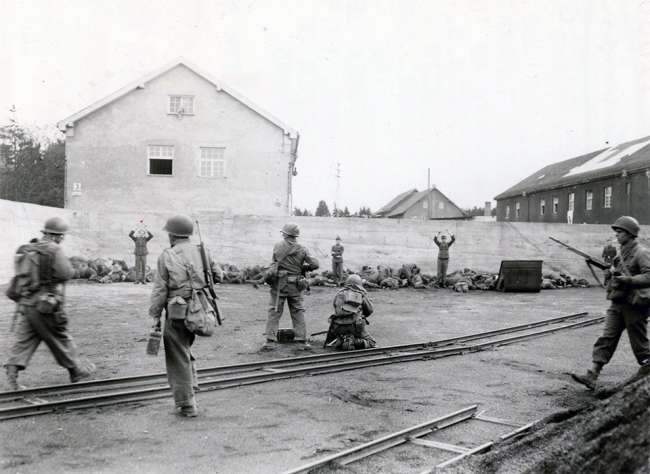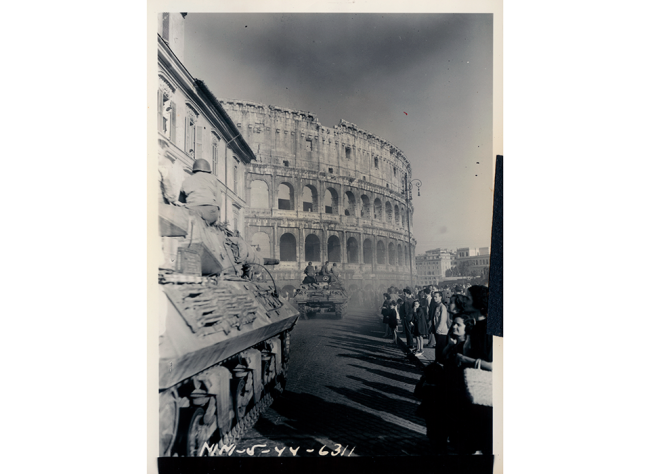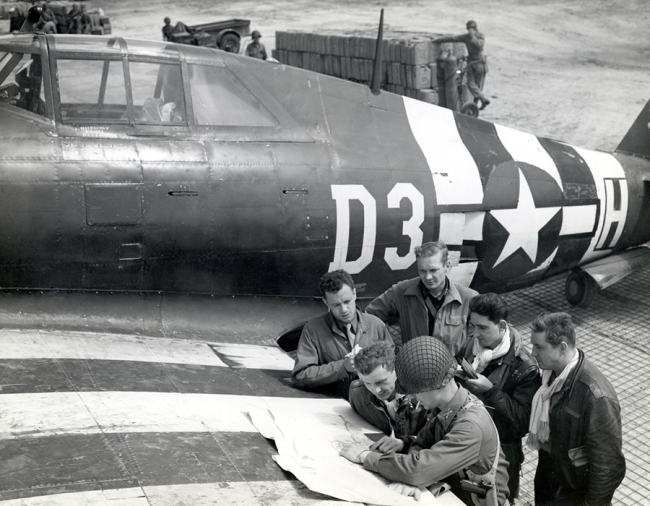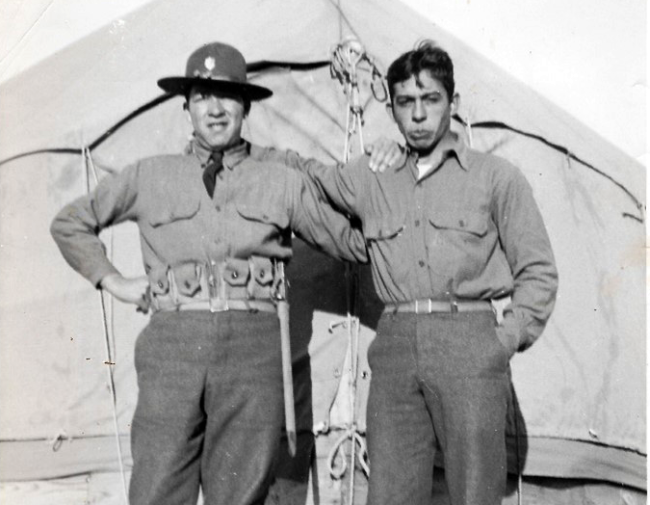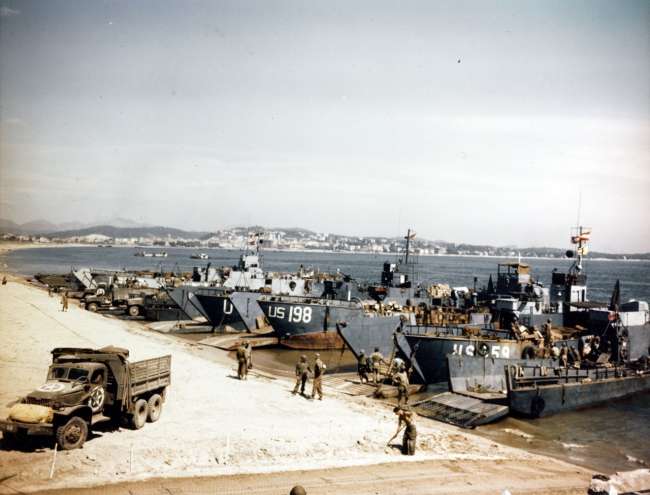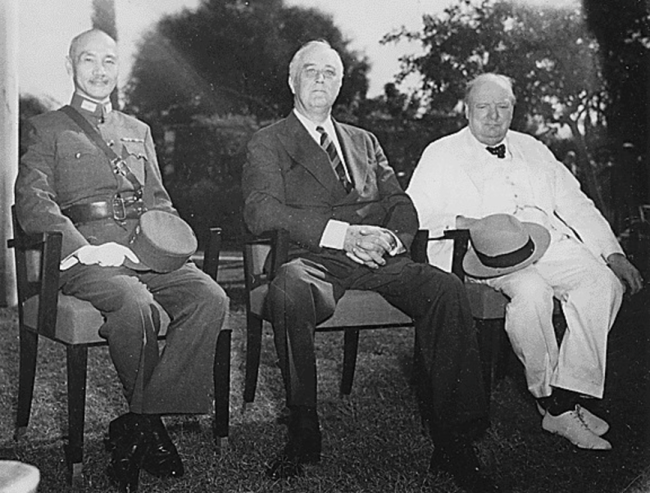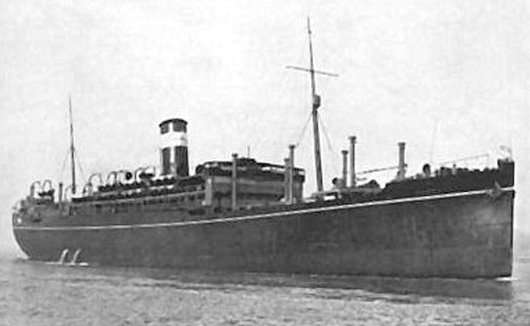Top image:“Major Martin’s” personal items.
Operation Mincemeat has been the source of many books and two movies and was an incredibly daring scheme. Even the authors of the plan had recurring doubts about the possibility of success and the wisdom of even attempting it.
In order to deceive the Germans about the Allied plans to land in Sicily in July 1943, a team of British intelligence officers created a plan to take a corpse and dress it as an officer carrying papers indicating that the Allies were going to land in Greece and Sardinia. The corpse would then appear to have been killed in a plane crash into the sea and float ashore on the southern coast of Spain, which was technically neutral but many in Francisco Franco’s Spanish government were favoring Germany. The plan counted on Spain breaking its neutrality and giving Germany copies of the documents thereby causing the Germans to shift troops from Sicily to Greece.
Operation Mincemeat’s roots can be traced to a memorandum produced by the Royal Navy’s Naval Intelligence Department. (NID). At the beginning of the war, Rear Admiral John Godfrey was the chief of NID and he issued what became known as the Trout Memo. The actual author of the Trout Memo is most probably Godfrey’s assistant, Ian Fleming, who after the war became famous as a spy novelist and the creator of James Bond. The Memo likens deceiving the enemy to fly fishing, which led to its title.
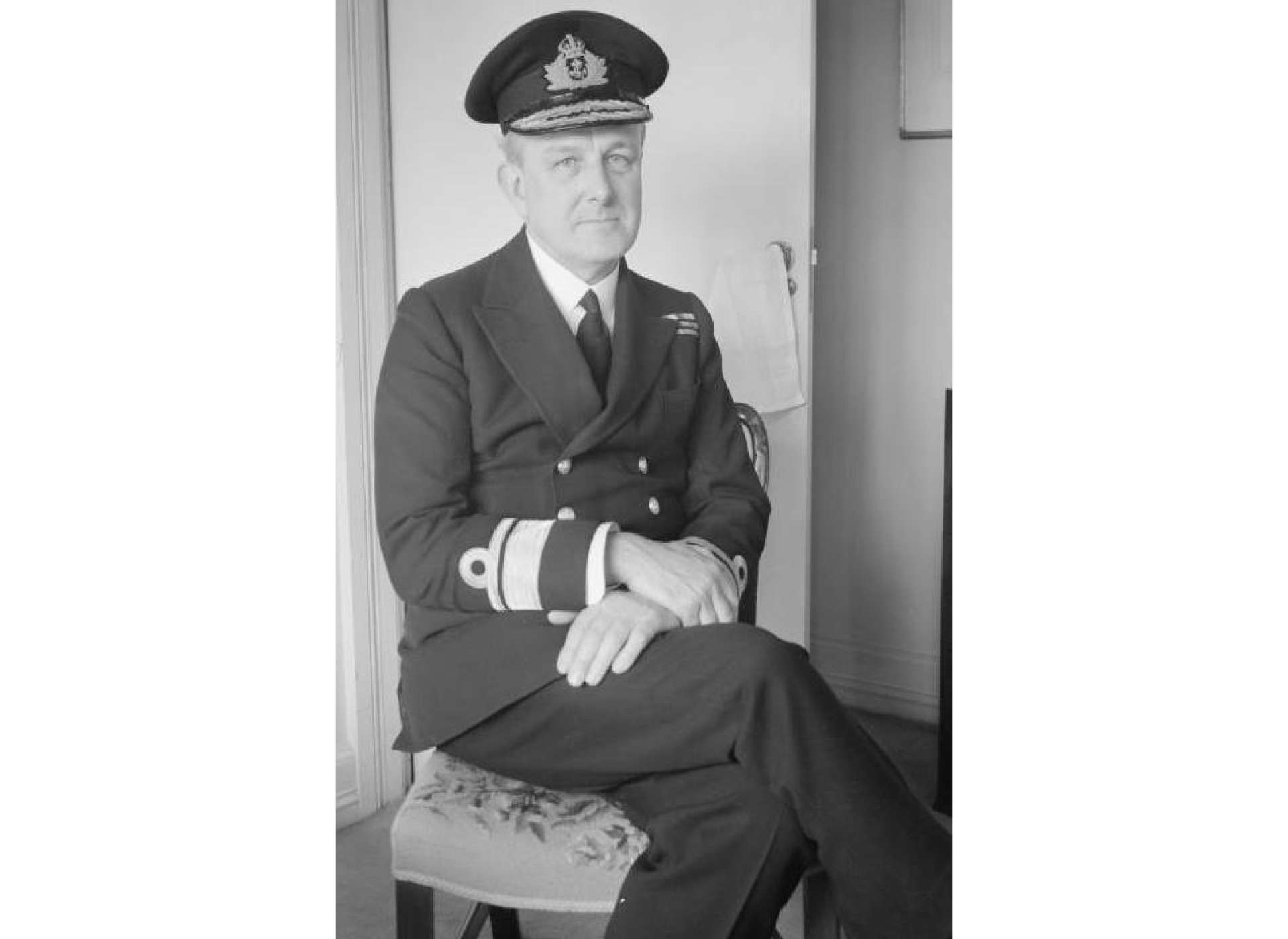
Vice Admiral John Henry Godfrey, CBE. IWM A 20777
Fleming produced a list of various schemes to deceive the Germans and number 28 on the list was the idea of letting the Germans discover a corpse with a set of false plans on it. It was noted as “A suggestion. (not a very nice one.)” Fleming freely admitted that he borrowed the idea from a 1937 novel by Basil Thompson.
Thompson had been the head of Scotland Yard’s Criminal Investigation Division (CID) during World War I, and was widely seen as Britain’s chief “spycatcher” during that war. And of course, he was a novelist.
The idea was next picked up by Charles Cholmondeley, a very tall and myopic RAF officer who had been assigned to MI-5, Britain’s counterespionage service. Cholmondeley was assigned as secretary to the XX Committee. The XX Committee, established in January 1941, was composed of representatives of the military service intelligence agencies, including NID, MI-5 and the Secret Intelligence Service (SIS) which is more popularly known as MI-6. The XX Committee sorted and assessed intelligence produced by the growing army of double agents being run primarily by MI-5. (The name of the Committee was an inside joke as it could be the Twenty Committee in Roman numerals but it was also the “Double Cross” Committee.) The chairman of the Committee was Sir John Masterman, an Oxford don and historian. And naturally, Masterman was a detective novelist as well.
Cholmondeley proposed a variation of Fleming’s plan to the XX Committee involving a corpse that appears to have drowned in an aircraft crash into the sea. (This idea was also inspired by an actual air crash a month before in September 1942.) The Committee rejected the idea but Masterman was intrigued by it and appointed Ewen Montagu, the NID representative, to work with Cholmondeley to further develop the plan. In 2010, bestselling author Ben Macintyre published an excellent history of the plan title Operation Mincemeat, and he observed that the operation “began as fiction, a plot twist in a long forgotten novel, picked up by another novelist, and approved by a committee presided over by yet another novelist.”
Montagu, from an aristocratic background, had been a rising star in the British legal system and had tried several notable cases as a barrister. The partnership of Cholmondeley and Montagu turned out to an excellent match as both men were highly intelligent and also remarkably creative. Montagu, in his own memoir, The Man Who Never Was, published in 1953, explained the origin of the name. Operational names were selected from lists maintained by the services:
I therefore went to see what names had been allocated for Admiralty use, and found that the word “Mincemeat” had just been restored after employment in a successful operation sometime before. My sense of humor having by this time become somewhat macabre, the word seemed to be one of good omen – and Operation Mincemeat it became.
The Man Who Never Was (p.32)
The Man Who Never Was is an excellent read and details the numerous exercises in creating a fictional officer to be washed ashore in Spain. For example, the officer, who eventually becomes “Major William Martin” had to have a naval connection but naval officers in those days still wore dress uniforms when travelling, which were made to measure. As Montagu notes “We formed a horrid picture of Gieves’ [a well known haberdashery in London] cutter being brought down to measure and fit our corpse for its uniform, and discarded that suggestion!” p. 59. Thus, Martin became an officer in the Royal Marines and would be wearing the looser battledress uniform.
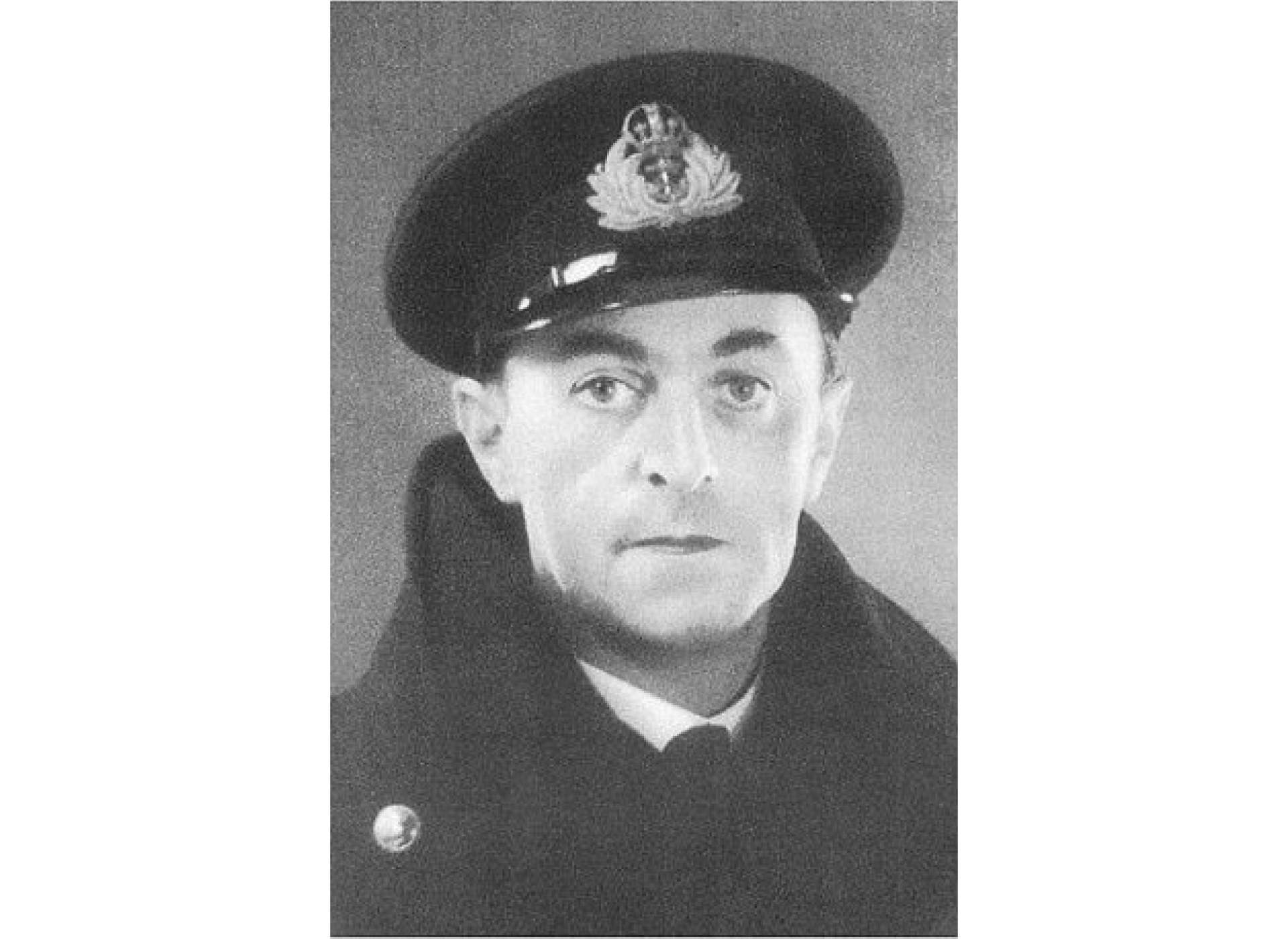
Lt. Commander Ewen Montagu, RNVR
The Mincemeat team grew as specialized knowledge in various areas was needed. Montagu sought out the leading pathologist of the day, Sir Bernard Spilsbury, to assist in finding a corpse of the right age, and recently deceased. This proved much more difficult than expected until the discovery in a warehouse of a homeless man from Wales who had died from eating rat poison. There was much debate about how extensive an autopsy would be and whether the poison would be detected.
What Montagu calls “pocket litter” was created. This ranged from letters from Martin’s father and fiancé, ticket stubs from a play the night before Martin left London, bills from his tailor complaining about delayed payments, a receipt for an engagement ring, and other items that gave depth to Martin as a person.
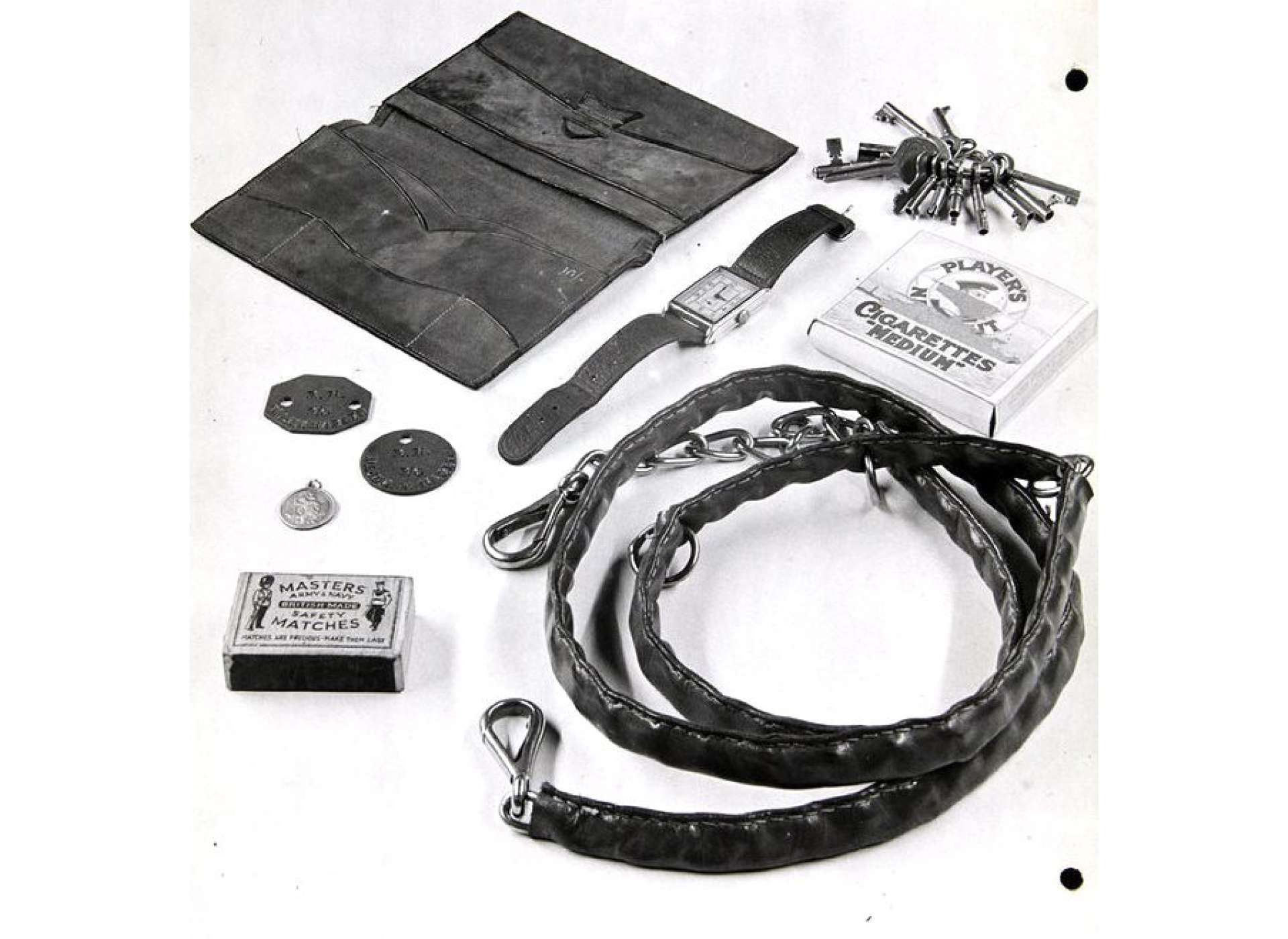
"Pocket Litter"
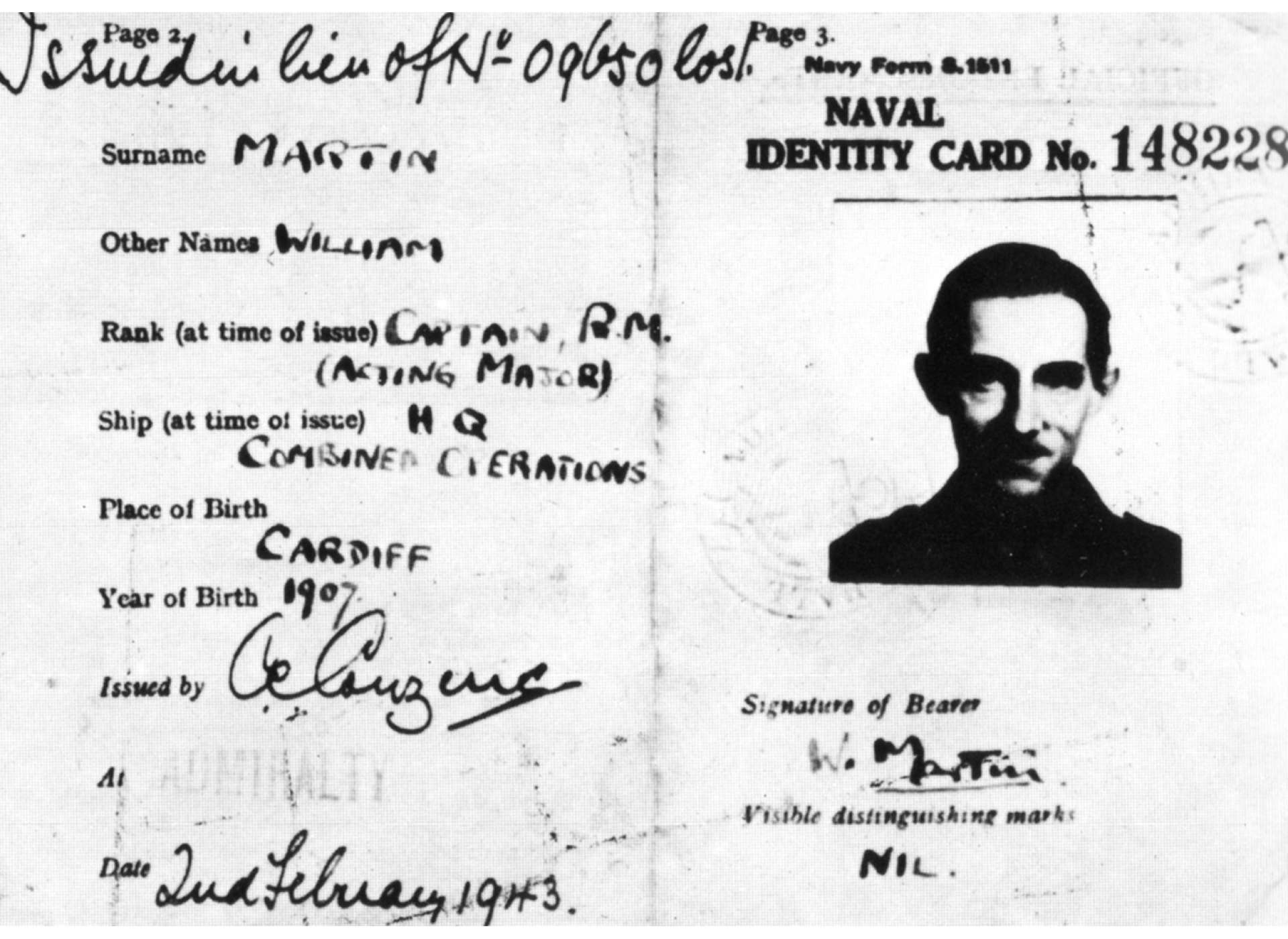
Major Martin's ID card
There were two documents that were at the heart of the deception. One was a letter that Montagu dubbed “the Vital Document.” This letter from General Sir Archibald Nye, Vice Chief of the Imperial Defense Committee, to General Harold Alexander, the highest ranking British general in North Africa, addresses increasing forces for the upcoming (false) attack on Greece and Crete, and the use of an invasion of Sicily (the true attack) as a diversion to fool the Germans into not reinforcing Greece. Montagu observed in his memoir that any intelligence the Germans received about the impending invasion of Sicily could be dismissed as Allied deception plans.
The second letter was from Louis Mountbatten in Combined Operations to Admiral Cunningham, commander in chief of the Mediterranean Fleet, introducing Major Martin as an expert in amphibious landings. The letter acknowledges the recent disastrous landings at Dieppe and makes a joke about sardines. Montagu believed that the Germans would accept this letter as authentic due to frank recognition of Dieppe as unsuccessful and the bad joke about sardines indicated Sardinia would be invaded next. Much of the Italian high command did in fact believe Sardinia would the next landing site as Sicily was too obvious.
All the elements of the plan came together in April, 1943. On April 17,1943, Montagu and Cholmondeley dressed the corpse and put it in a special steel container that was packed with dry ice. They then put the canister into a van that was driven by St John “Jock” Horsfall, who had been a successful race car driver in pre-war Britain. The three men then travelled at high speed to a naval base in Greenock, Scotland where the body and canister were put aboard HMS Seraph, a submarine. Seraph set sail on the 19th and arrived off the coast of Spain on the 29th of April. The body was dropped in the ocean by the submarine’s officers as the crew had been sent below, having been told the canister contained a secret meteorological device.
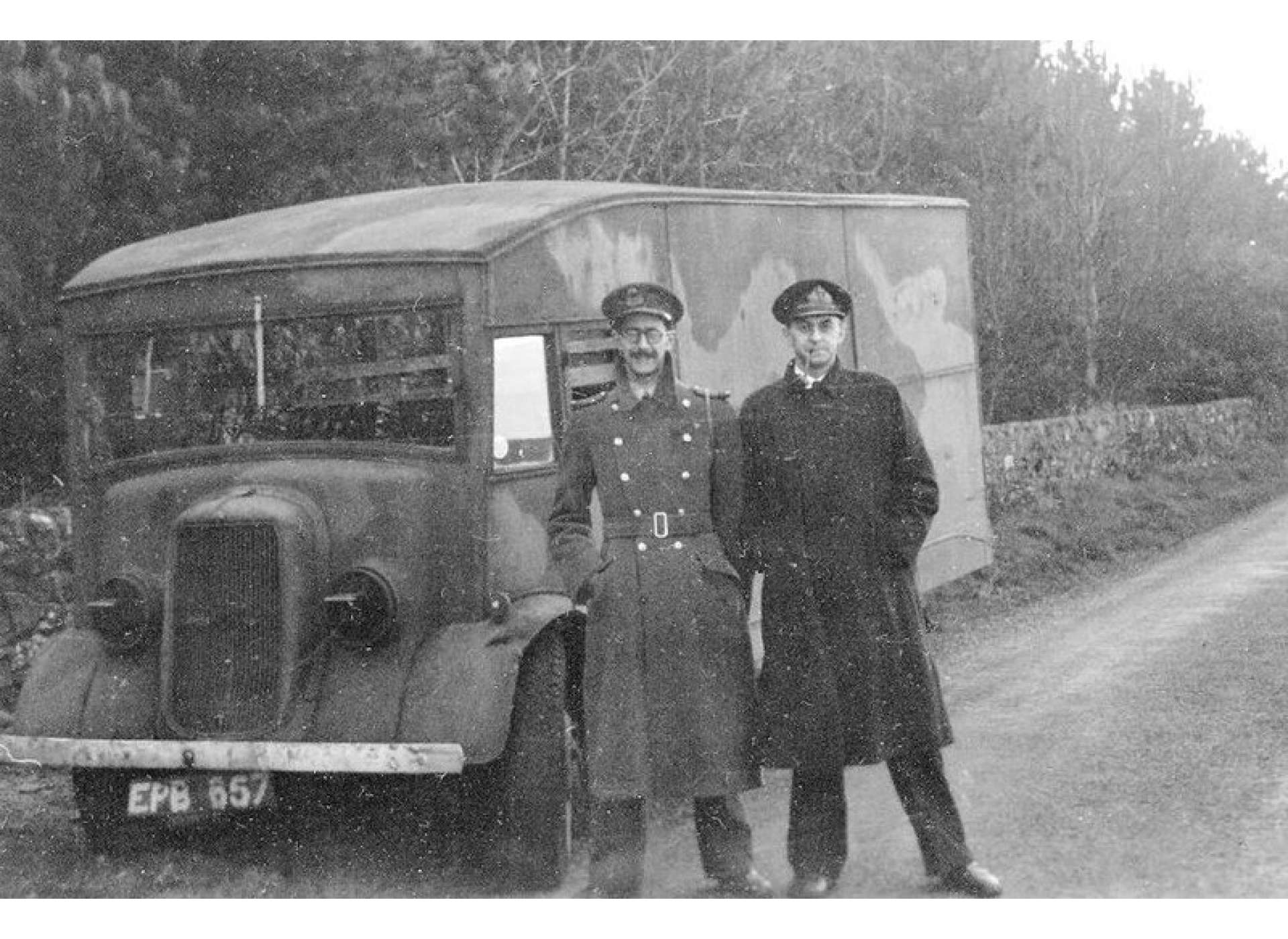
Charles Cholmondeley and Ewen Montagu on 17 April 1943, transporting the body to Scotland
The body washed ashore in Huelva, Spain and was discovered by fisherman the morning of April 30, 1943. Huelva was chosen as the place for “Martin” to be discovered for several reasons. The local currents were strong enough to push the body close to shore. Huelva had a German consulate in the town staffed with a competent Vice Consul and also an Abwehr officer operating under diplomatic cover. The local Spanish military officers were pro German and would most likely turn copies of any important papers over to the Germans. Additionally the Mincemeat team were hoping that the local coroner would not be as sophisticated as doctors in larger cities. Finally, the local British Consul was deemed reliable and capable.
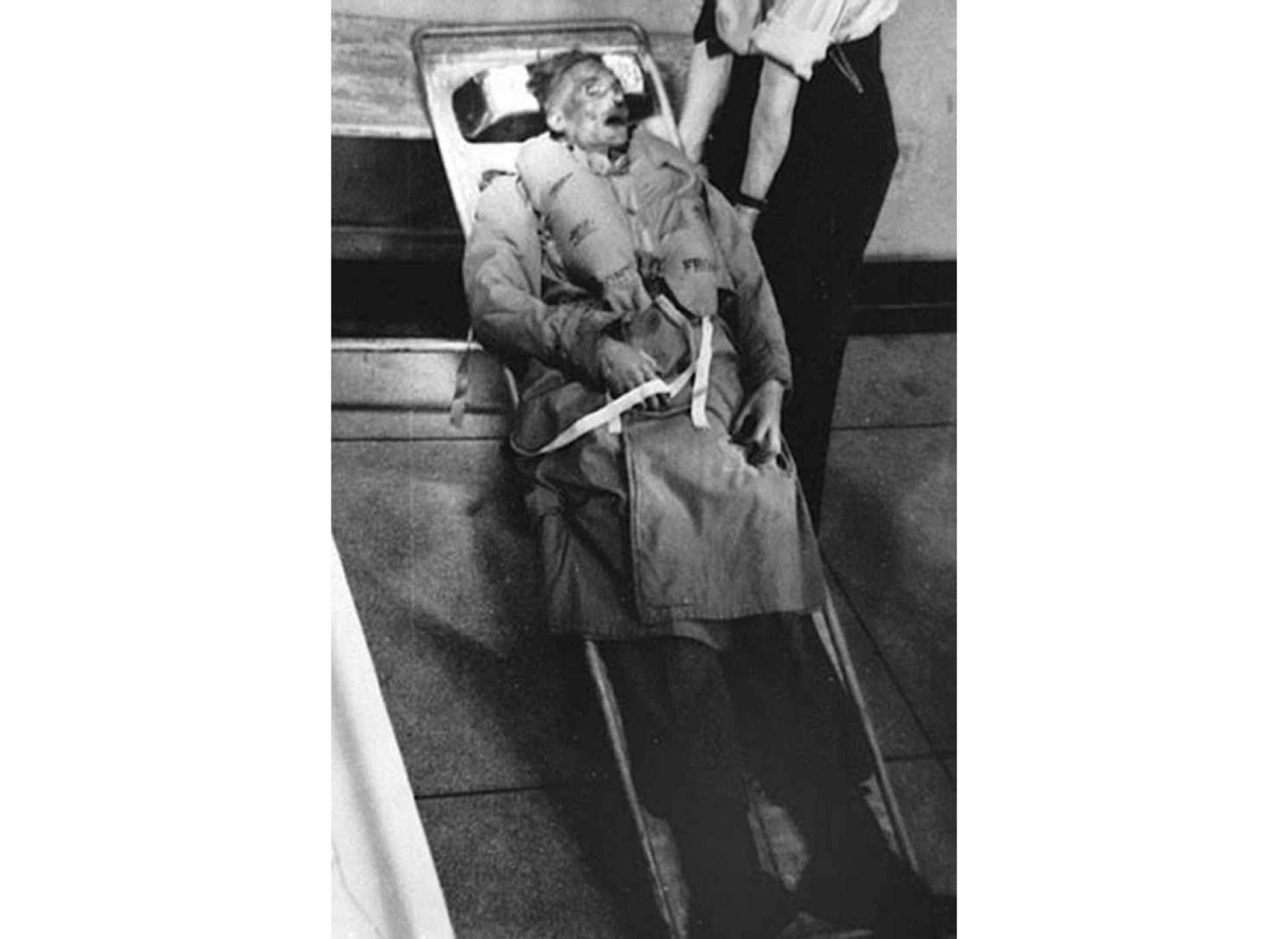
The corpse of Glyndwr Michael, dressed as Martin, just prior to placement in the canister
An autopsy was conducted on May 1, 1943, with Francis Haselden, the British Consul, present. To prevent a thorough examination, Haselden urged the doctor conducting the autopsy to bring the proceedings to a quick close due to the heat of the day and the corpse’s smell. The next day a funeral with full military honors was held.
The Spanish Navy retained the briefcase that had been shackled to Major Martin’s wrist and for the next 9 days there were frantic communications between Germany and Spain with Germany asking for copies of the contents of the briefcase. Another stream of messages was between London and Haselden, with London urging Haselden to retrieve the case before the “highly secret” contents might be disclosed to the Germans. The messages to Haselden were in code but a code the British knew the Germans had broken earlier in the war. Finally, on May 11, the briefcase was returned to Haselden and was then shipped to London by diplomatic bag.
Once back in London the letters were examined and small clues showed that the letters had been taken out, using small steel rods on which the letters were rolled without breaking the envelopes. Montagu wrote in his memoir that from May until July 1943, he and the Mincemeat team had nothing to rely on for the success of the operation, other than German thoroughness. This was not entirely true as codebreakers at Bletchly Park were reading German communications about shifting troops from Italy to Greece.
As early as May 14, 1943, in a meeting with Admiral Karl Doenitz, Adolf Hitler declared that Sicily was not the next landing and that Greece and Sardinia must be reinforced. Hitler ordered the 1st Panzer Division moved from France to Greece along with 7 infantry divisions from Italy, and an additional 10 infantry divisions from Italy to the Balkans. Sardinia was also heavily reinforced with aircraft and naval elements as well. Even when the invasion of Sicily began on July 9, 1943, Hitler apparently still believed a major attack would fall on Greece.
Sir Michael Howard, in his book Strategic Deception in the Second World War, volume 5 of the official history of British Intelligence in the Second World War, called Operation Mincemeat “the best known, and perhaps the most successful single deception operation of the entire war.” (p.89). Montagu’s book was a best seller and was made into a film, The Man Who Never Was, in 1956.
More recently, Macintyre’s 2010 book became the basis for the 2022 film Operation Mincemeat. Many aspects of Mincemeat were kept classified and omitted from Montagu’s book and the subsequent 1956 movie. It was not until 1997 that Major Martin’s real identity was revealed when the Commonwealth War Graves Commission added Glyndwr Michael’s name to the grave in Huelva.
Walter Wolf III
Walter Wolf joined the Museum in October 2019 as the Museum’s first intellectual property Rights Manager in the Curatorial Department. Walter has a Bachelor’s degree in Modern European History and a Juris Doctor degree in law. He also has a certificate in Espionage and Covert Operations from the University of New Orleans.
Cite this article:
MLA Citation:
APA Citation:
Chicago Style Citation:


